There is nothing as wonderful in the world as plucking a tomato from a vine and eating it. I wait all spring for that moment. We live in zone 3b in the interior of BC, Canada, and growing fresh tomatoes here can be tricky but possible with a few adaptations. Over my gardening career, I have discovered how to grow the best tomato plants for short growing seasons. This method can be applied to many of the northern growing zones. My desire to provide nutrient-rich foods for my family has helped my determination to figure out how to grow a garden full of mature produce successfully.
One of the keys to growing heat-loving tomato plants in colder zones is providing them with a bit of protection via a greenhouse or high tunnel. We bought a high-tunnel a few years ago, which was a game-changer for us! I could finally grow enough tomatoes to can all our tomato products for an entire year!
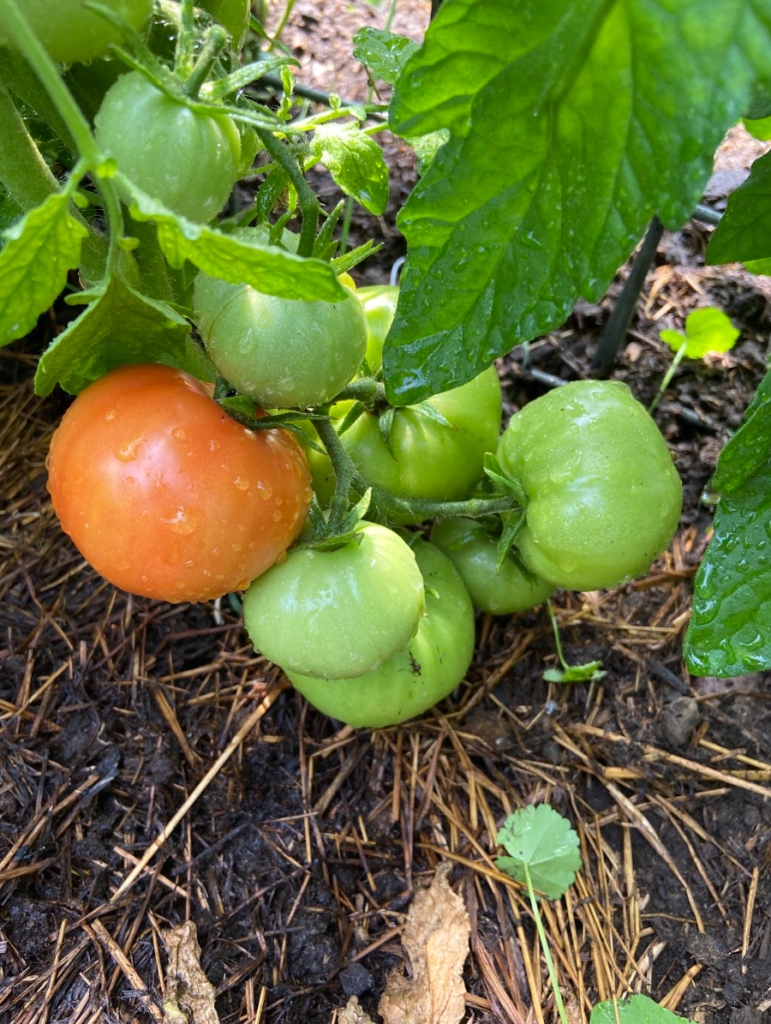
Identifying Tomato Types
Many tomato varieties have a growing cycle that is longer than the growing season for many of us. If you do not use season extenders and choose different varieties that suit both growing zones, your garden will have unripe green tomatoes. So, let’s dive in.
Types of Tomatoes
There are two types of tomato plants:
- Indeterminate Plants: Indeterminant tomatoes will continue growing and producing fruit throughout the growing season until the plant experiences its first frost. Indeterminate vines are commonly used for vertical garden growing due to their long vines that need to be kept off the ground to help prevent plant disease. They will require you to prune them throughout the growing season and require support structures to maintain the large growth of the plant.
- Determinant Plants: Determinant tomatoes are more petite and will stop growing once they reach a specific size, usually under 4 feet, and are ideal for small space growing. They are commonly referred to as bush tomato plants or compact plants and do very well when grown in the ground and in pots. The nice thing about determinant tomato plants is that all the fruit they bear will ripen simultaneously. So, if you want a small tomato crop and to can tomatoes products at the end of the garden season, this might be your choice. Just like indeterminate varieties, you will want to use a tomato cage to help support the plant. Once the branches become filled with tomatoes, they become very heavy and can cause the plant to tip over. Bush tomatoes do not require as much pruning as indeterminate, but it is still recommended that you prune a few of the suckers to increase airflow and any part that develops disease off the plant.
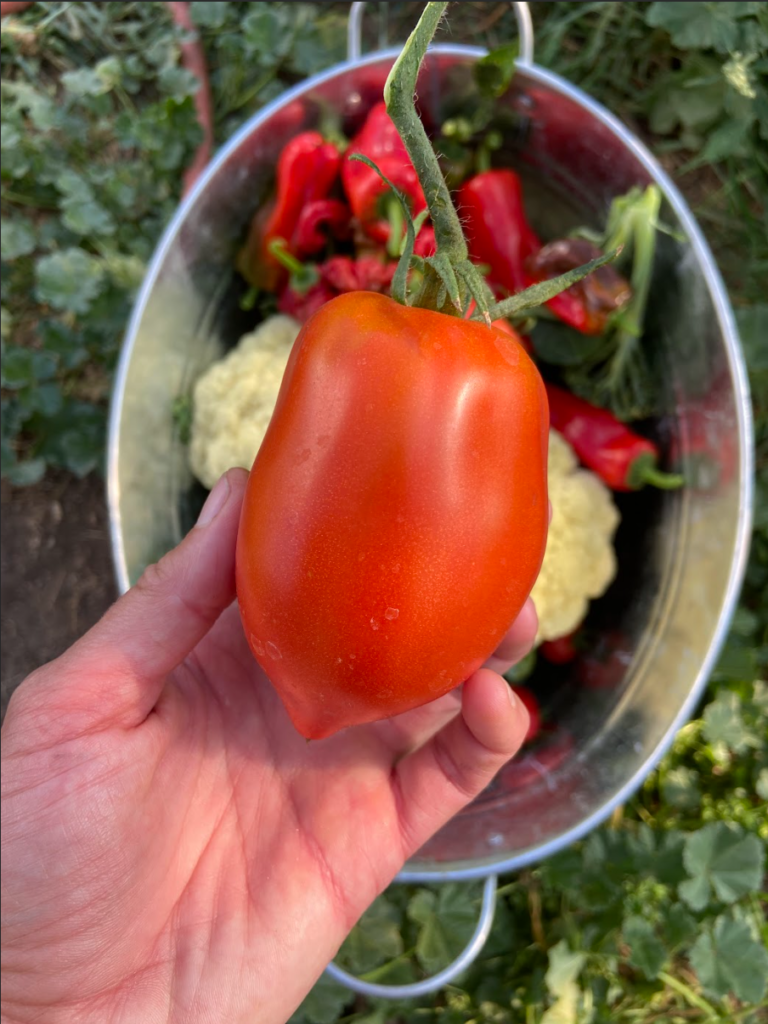
Deciding on a growing extender
The most common garden season extender is the greenhouse. A greenhouse is an outbuilding that is equipped in such a way that it allows a surplus of light into it. They are commonly made with a wooden or steel frame and Plexiglas, polycarbonate, or windows. Most greenhouses will have some sort of electricity supply so that they can be heated when the season is still cold.
High Tunnels are another type of season extender that can be used for tomatoes. They are generally used to extend the season at the end of the growing season. Shaped like a rectangle with a round roof, high tunnels are made with a stainless steel pipe frame and covered with heavy-duty clear plastic.
I grow all my tomatoes in a greenhouse to control the temperatures a little more and give the plants the extra heat they love. You can generally grow tomatoes outdoors if your nighttime temperature stays about 10C (50) during the growing season.
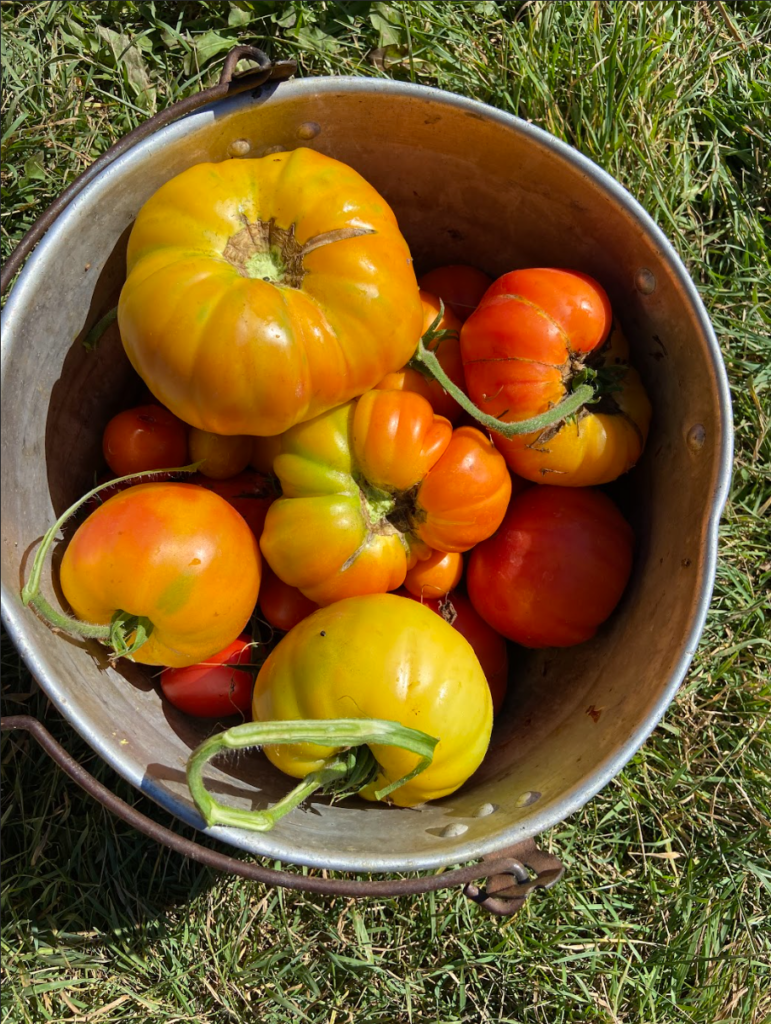
The Best Types of Tomatoes
Over the past few years, I’ve learned that several varieties of heirloom tomatoes grow well in a short-season northern garden. Planting the right type of tomato for your climate can make all the difference. I grow both determinate and indeterminate tomatoes, but I choose the best tomato varieties that do well in the north.
- Manitoba Bush is an excellent determinant tomato choice for the short-season garden. It is almost always the first to form fruit in the spring and ripen for me by mid-July. We have even been able to eat them during the last week of June due to an early start. They grow to be 4 feet tall with clumps of, usually around, seven mid-sized ripe fruit. They make excellent slicing and canning tomatoes.
- Stupice (Stoo-peach-ka) is a Czechoslovakian variety of tomato bred for its growth habit in the short season. The Stupice tomato is a smaller, round, slightly acidic tomato that we love! It usually ripens as early as the Manitoba Bush, but being indeterminant, it produces all summer long. Due to its production all summer, it generally yields a high volume of tomatoes.
- Amish Paste was developed in Pennsylvania by the Amish in the 1870s and is a beautiful choice for a paste tomato. It is meaty and makes an excellent pasta sauce. It usually ripens within 85-90 days, which is ideal for paste tomatoes. These are similar to the San Marzano and Roma tomatoes but grow well in our short growing season.
- Old German is hands down my favourite slicing tomato. The fruit is large and yellow with peachy/pink striping throughout. It has sweet fruits that are not overly sweet. It does pretty well in our northern garden for such a large tomato and produces the best-tasting tomatoes. The old German tomato has a nice meaty texture and makes an excellent option for a tomato sandwich due to its sweet flavor and size, but it can also be used to make sauce.
- Beefsteak tomatoes require a more extended season to develop and ripen than other varieties, but I have found that the Arbison Beefsteak is a tomato variety that does well. I grow them for canning as they produce large fruit with meaty flesh and deep red, acidic tomatoes.
- Cherry tomatoes, also called grape tomatoes, do so well in the northern vegetable garden due to their small size. My favourite varieties are Berry’s Crazy Cherry, Sungold, and Red Cherry. Sometimes, you will hear cherry tomatoes called salad tomatoes because they are easy to add to a fresh garden salad without cutting them first. Like me, you will have to start topping these plants (cutting the new growth off) by the beginning of August to encourage the fruit to ripen if you live in a location with shorter growing seasons.
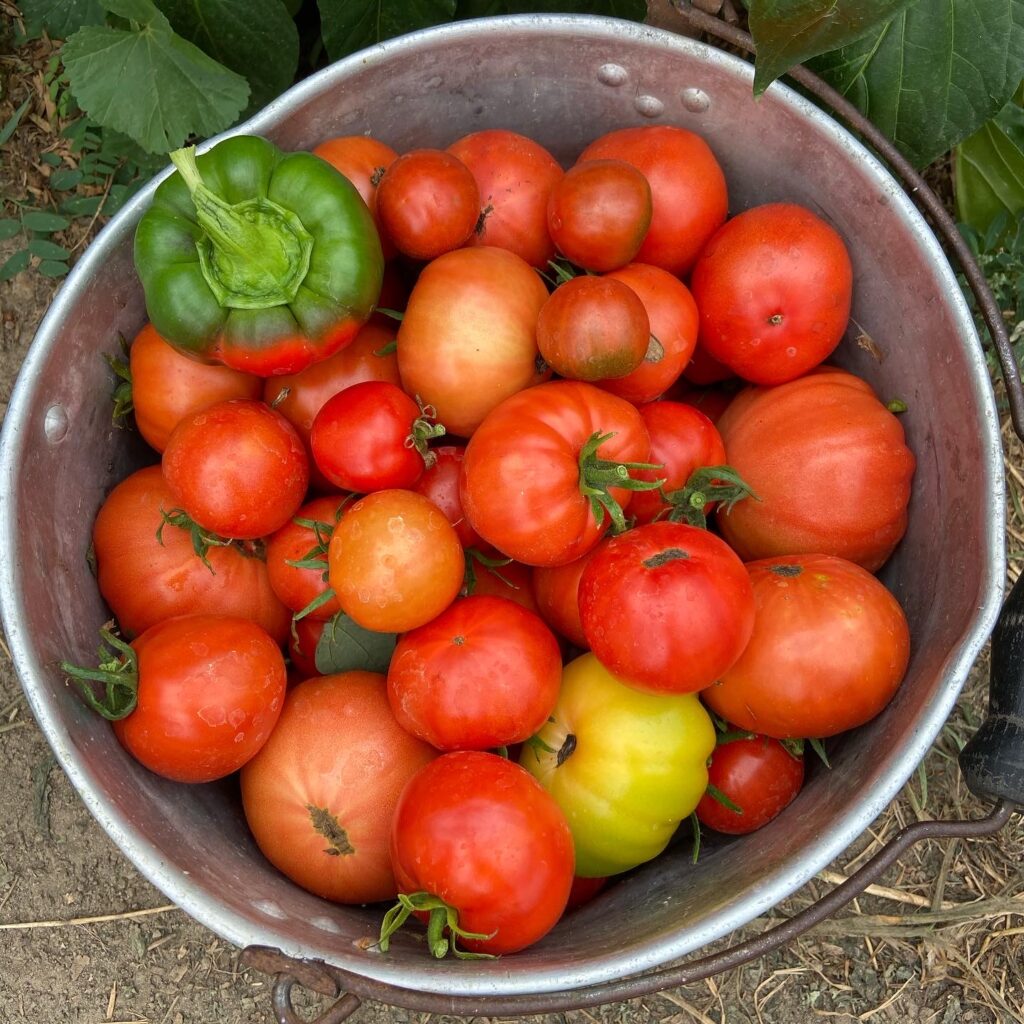
Conclusion
The best tomato plants for short growing seasons can be challenging to find, and it will take many years of trial and error to see what works best for you. I hope this guide gives you an idea of some tomato varieties that will grow well in your area as you continue to experiment with other varieties of tomatoes. I assure you that I have been cold-climate gardening for a long time in British Columbia and have had my fair share of failed tomato attempts. These are my favourite tomato varieties to plant yearly because of their successful growth in my growing zone. If you are looking to buy seeds, my favorite places to order from are West Coast Seeds and Moonglow Gardens. Use the code 2024 when you check out at Moonglow Gardens for free shipping.
What are your favorite tomato varieties to grow? I would love to hear about the different types of tomatoes you have grown and the best varieties you have found! Comment below and tell me all about it.


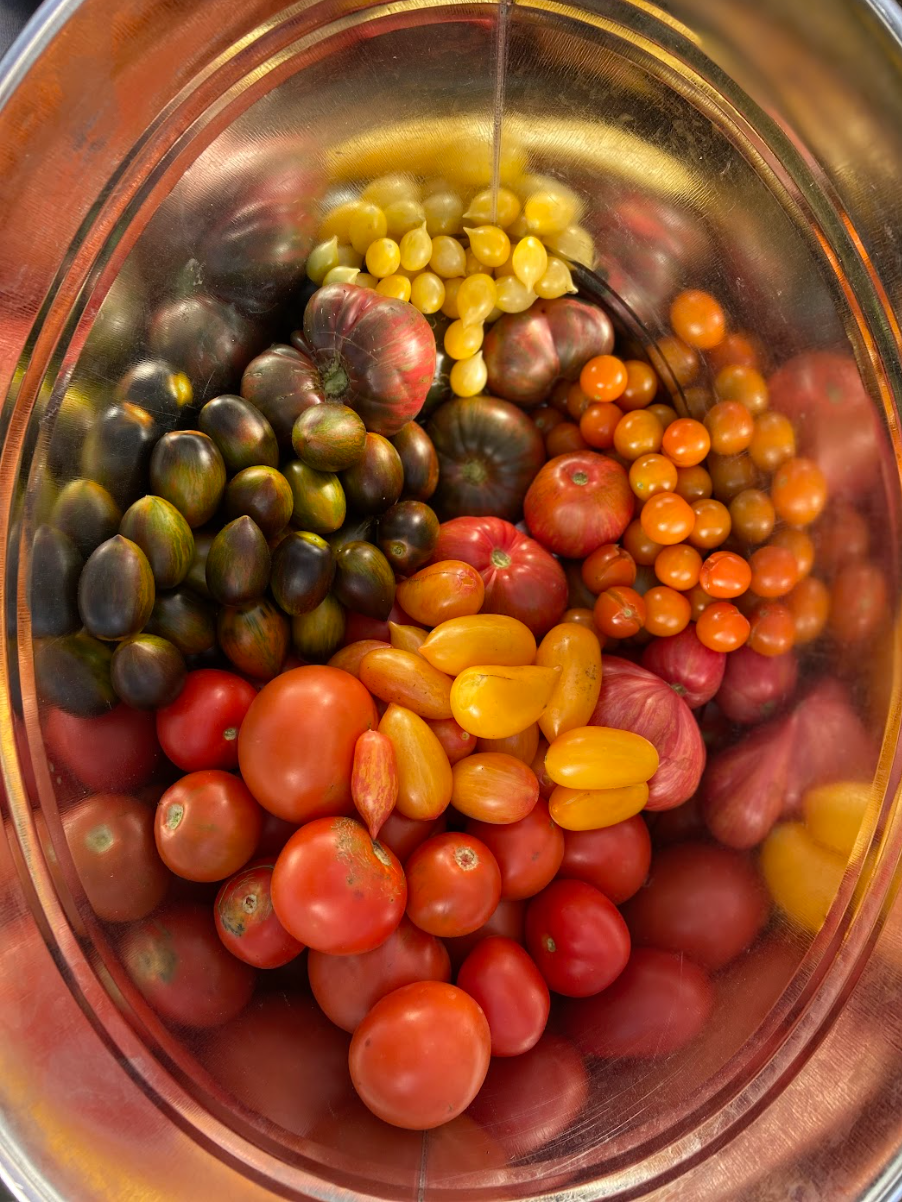

1 thought on “The Best Tomato Plants for Short Growing Seasons”